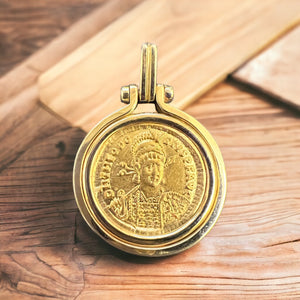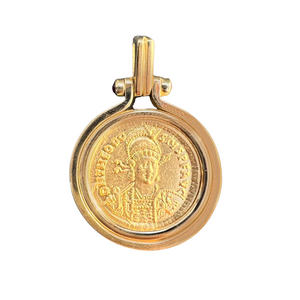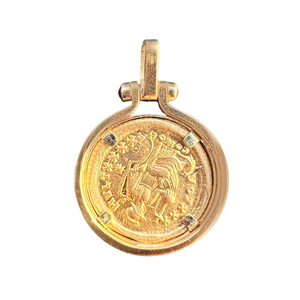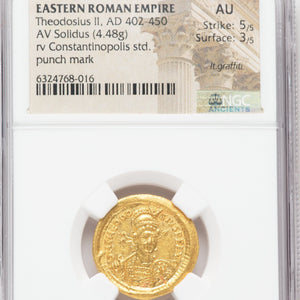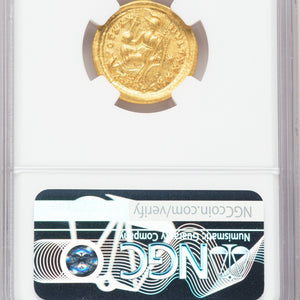Ancient Byzantine - AV Solidus - Theodosius II, Eastern Roman Empire - Circa (402-450 AD)
$4,125
Denomination: AV Solidus
Date: Circa: 402-450 AD
Mint: Constantinople.
Weight: 4.48 g
Mount: 18 kt gold - with Ruby accents
Grade: NGC – 6324768-016 – AU details -Strike: 5/5, Surface: 3/5
Description: Theodosius II, Eastern Roman Empire. Obverse: Latin: (D N THEODO-SIVS P F AVG), pearl-diademed, helmeted, cuirassed bust of Theodosius II facing, head slightly right, spear in right hand over shoulder, shield decorated with horseman motif in left. Reverse: Latin (VOT XXX-MVLT XXXX Δ). Constantinopolis enthroned left, left foot on prow, globus cruciger in right hand, scepter in left, shield beside; star in right field, CONOB in exergue.
History: Theodosius II, Roman Emperor of the East, was born in April of 401 AD. He was baptized and crowned Augustus in January of the following year to enthusiastic crowds. In February of 438, the Codex Theodosius was published and presented to the Senates in Rome and Constantinople, which both received the work with apparent enthusiasm. The code is probably the only major accomplishment during Theodosius’s reign that can be directly attributed to his influence. Theodosius studied and visible piety would become a model for future emperors, and his Theodosian blood kept civil wars practically non-existent
Struck during a period when Byzantium was paying enormous tribute to the Huns, this coin very well could have been part of the 700 pounds of gold (50,400 solidi) that Constantinople sent to the Huns every year after AD 433. Following a successful Hunnic invasion of the Balkans in AD 447, the tribute was tripled to an unthinkable sum of 151,200 solidi per year. These truly exorbitant tribute payments lasted only three years, however, as Marcian simply refused to pay them on his ascension to the throne in AD 450.
61198






